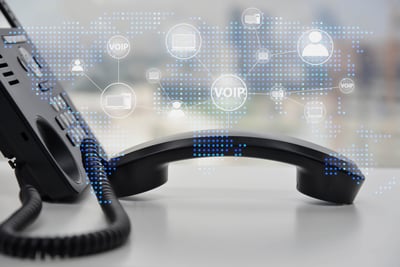October 28, 2021
 by Kyle Myers / October 28, 2021
by Kyle Myers / October 28, 2021

Not every brand has the chops to be cheeky.
But an entertaining voice can connect your brand to your followers on an emotional level. There are ways to start #winning in the humor race without embarrassing your brand. Failing at humor in the marketing world is sure to attract attention, but not the kind that your company wants.
If the thought of writing with wit makes you nervous, keep reading. This article will cover why humor works for brands and best practices for using humor respectfully. We’ll also take a look at a few brands that are crushing the humor gamut.
Humor humanizes your brand voice, making your business feel more relatable and authentic to consumers. You can find articles breaking down types of brand humor, but the most important factor to consider before implementing giggles in your messaging is: who is your brand?
Let’s start from the very beginning. It’s a very good place to start. (Thank you Julie Andrews from Sound of Music for creating a mental soundtrack for this section.)
Humor is important to brand voices for a number of reasons. If you were a musical geek throughout childhood like me and watched Sound of Music hundreds of times, you’re already finishing the entire melody in your head while you’re reading this. Why? Because your brain has just been triggered with memory recall by a few lines from a song.
In the brand awareness stage of the customer journey, memory recall is vital. You want to be the first brand that comes to mind when a consumer thinks of a particular product or service that you offer.
According to one scientific study, humor has a positive effect on memory recall, and consumers recall humorous advertisements better than non-humorous ones. Competition is only growing, so if you want your brand to rise above, you need to be the one to remember. At the end of the day, your company needs to make a sale and leveraging your brand can create loyal customers.
Sprout Social conducted a detailed survey of consumers in relation to brand personality. The report found that three in four consumers appreciated humor from brands. Now that we know that humor helps a consumer remember and engage with your brand and that they appreciate good humor from companies, what are you waiting for?
In addition to funny content, what else do consumers want to see from a brand’s personality? Sprout Social reported that the number one personality trait consumers want in a brand is honesty. Honesty is closely followed by friendly, helpful, and then funny. From these statistics, we can deduce that while consumers appreciate jokes and fun, they don’t want brands to sacrifice their authenticity in the pursuit of a laugh.
It’s not always obvious how to use humor the right way, and the same jokes or tone won’t fly with every brand or every customer.
With the all-consuming growth of social media, many companies are using casual tones and trendy sayings in blog posts and social media captions. When a reader can laugh at a company’s ad, it automatically makes that company more relatable to a consumer. Behind great brands are normal people with fears, attitudes and insecurities. Let those individuals speak for your brand. Why? People get people.
Life is stressful enough. If your company can bring a smile to a consumer’s face and brighten a stressful day, you’re creating an instant, emotional connection with that individual.
One psychological study states: “A humorous perspective creates psychological distance, which can help you avoid feeling overwhelmed and diffuse conflict.” Laughter is actually good for a person’s health and leaves that warm, gooey feeling behind. When that gooey feeling reminds a consumer about your brand later, that’s a win.
So instead of pulling out a thesaurus when you write a blog post, use relatable, modern language. Write directly to your reader like you’re talking right to them. Trendy words are especially effective when reaching millennials and Gen Z. Sprinkle trending words and phrases throughout your social media captions to remind your readers that you’re a brand of real, authentic people.
Some humor is just not funny. Unless you are trying to write cringe-worthy jokes, you want to avoid jokes that fall as flat as “Flat Matthew” did in the Super Bowl 2021. Stay relevant with your comedy. Everyone has a different sense of humor, so you want to try to appeal to as many people as possible. While some people may think literary puns are funny, most people won’t get them. A lot of brands are using humor effectively, and you don’t want your jokes to come up short.
Use A/B testing to research which of your humorous posts are performing best. Does your audience prefer a dry wit? Or do they prefer an obviously exaggerated poke at fun? Your brand’s audience is unique to your company. Not every joke is going to be a home run.
Conduct a few surveys on Facebook or in Instagram Stories about jokes or headlines. Gather actual feedback from your consumers about what they find entertaining.
There are two departments you don’t want to see when writing humor: PR and HR. If a reader could possibly take offense to something you write, it isn’t funny. Stay away from politics, culture, race and religion to start with. If a joke is funny at someone else’s expense, it’s not the brand voice you want. Great companies rise above their competition without going out of their way to fire insults at their competitors. Stay classy.
Another type of humor that you should avoid is morbid humor. Some brands try it, and they often fail and upset readers. While amusement is the top emotion that can make content go viral, there are times to use humor and times to invoke other emotions. Businesses like funeral homes and hospitals should focus on emotions like comfort and empathy instead of amusement.
One brand actually finding success with morbid humor is DeadHappy, a life insurance company. Given that their slogan is “Please die responsibly,” it’s safe to say that they aren’t going for the warm and fuzzy humor effect. It’s a risky gamble to use morbid humor in advertising. I recommend staying away from topics like death and injuries to keep the tone and overall emotion light.
In short, understand your audience and their feelings.
Trending hashtags can change in a wink. Your brand can find a broader audience and create higher engagement with your current audience by using hashtags. Many brands use hashtag campaigns to promote brand awareness. You can use humor in your hashtags to encourage more people to share the campaign.
Charmin’s #tweetfromtheseat campaign had some funny results and definitely reached a broader audience. Though, obviously, very few brands can get away with potty humor.
We can't wait for the first #tweetfromtheseat in #280characters. For those days when you skipped your coffee and need the extra time.
— Charmin (@Charmin) September 27, 2017
You can also use hashtags to leech onto other trending topics to get some laughs and showcase that you’re a relevant brand. If you’re a local small business, keep track of community events and trending hashtags that are unique to your area. Use parades, concerts, holidays, etc. to promote engagement and encourage conversations.
Mailchimp offers digital marketing products like email, automations and website design. They have steep competition in this industry. To stand out, Mailchimp has embraced an unusual brand identity, style and voice. In 2018, the company implemented a new rebrand, embracing cartoon-ish artwork and bright colors. From their logo and mascot, Freddie, to their unique typeface, Mailchimp has decided to stand apart from its competitors by embracing the unconventional.
A large company like Mailchimp could rely primarily on its reputation and unique brand look to grow brand awareness. But the creators at Mailchimp have taken their brand personality a step further and fully embraced humor as a part of their company persona. In their public-facing writing style guide, they state that “our sense of humor is straight-faced, subtle, and a touch eccentric”.
If you’re familiar with the Mailchimp brand, you might remember a campaign called “Did you mean Mailchimp?” This advertising campaign poked fun at their own name with tongue-in-cheek jokes about how people say their name wrong, first inspired by a famous mispronunciation on the hit podcast, Serial. They created films based on rhyming words like “WhaleSynth” and “JailBlimp”. The advertisements were witty, fun and memorable.
This crazy advertising campaign would never have worked if the company didn’t have a humorous brand personality already. Otherwise, it wouldn’t be as authentic. But because Mailchimp had spent years honing their brand voice and sense of humor, people connected with the insane advertisements for “FailChips”.
While you may not personally love the products or services that these brands offer, you have to give props to their use of humor.
All you really need to do is take a peek at Taco Bell’s Twitter account to understand their dry sense of humor and jokes that relate to their food. They get very high engagement on their posts because they aren’t afraid to poke fun at themselves and they fully embrace their audience’s personalities.
Before you read any further, what saying just popped into your mind when you saw Skittles as the brand? Of course. It’s “Taste the Rainbow.”. Skittles has used the same slogan for their advertising campaigns for quite some time, but it’s still working.
Given that their Twitter bio starts with “The Official U.S. Tweeter of Awesomeness,” you can gather that they use lighthearted, overstated humor to make people laugh.
Old Spice is a men’s deodorant brand. Who cares about deodorant other than to make sure you don’t forget to lather up before a long flight? Or rather, caring about if other people don’t forget to lather up before a long flight. But Old Spice has taken a pretty unoriginal product that’s been around for decades and made it cool.
How? They used quirky humor and outlandish advertisements to spark conversation. The result? Their use of humor in their marketing actually saved the brand when it was on the brink of collapse.
Netflix is a mega brand that is not hurting for brand awareness. But they stay authentic by keeping their communication light-hearted, funny, and personable. Check out their Twitter account. They post a lot of tongue-in-cheek humor.
You’ll also notice that they use a first person voice in their writing. Doesn’t that make you feel like Netflix is a good friend that you also happen to binge TV shows with for hours at a time?
Wherever your brand lands on the humor gamut, you must stay consistent with your brand voice. Writers are going to have different senses of humor. Just like it’s important that your designers keep to your brand style guide, it’s also vital that your marketing writers follow the same tone of voice for your jokes and witty one-liners.
Scroll back up to the brands we looked at. They are very large companies with teams of marketing professionals and marketing firms who help them advertise. There are groups of writers who craft their content. But the messaging and use of humor is strong and memorable because it’s consistent and authentic over a long period of time.
Brainstorm as a team about what your tone and voice will be for humor going forward. Take detailed notes about what your humor will be and what it will not be. Before you set a new writer loose on social media, make sure they are writing in the same tone of voice that you’ve established in a brand voice style guide. If a popular brand suddenly comes out with a joke or a social media post that goes against what they are known for, it will hurt their brand reputation.
Think of your brand’s personality like a living, breathing person. What does this person sound like when they talk? What are their facial expressions? What do they do for fun? What do they think is funny? It’s your job as a team of content creators to bring the brand personality to life.
In conclusion, laughter is like a voice recorder in the mind of a consumer. When they laugh, they remember your brand. They also remember when your joke sucked, so don’t go down that slippery slope. Research how other companies are using humor successfully. Also research how brands have come up short with a lame joke. Make sure your team is on the same page and consistent with who you want your brand to be.
Kyle Myers is the Marketing Manager at Hyport Digital. She specializes in creating social media and digital marketing strategies for small businesses across the country. Kyle coaches small business owners on how to take advantage of social media trends to grow online engagement.
Imagine a world without communication: business would grind to a halt, governments would be...
 by Bhagirath Sindhav
by Bhagirath Sindhav
Written content doesn't always serve the purpose; people are switching more to voice...
 by Samudyata Bhat
by Samudyata Bhat
Amazon is a leader and pioneer in developing voice-assistive applications with conversational...
.png) by Shreya Mattoo
by Shreya Mattoo
Imagine a world without communication: business would grind to a halt, governments would be...
 by Bhagirath Sindhav
by Bhagirath Sindhav
Amazon is a leader and pioneer in developing voice-assistive applications with conversational...
.png) by Shreya Mattoo
by Shreya Mattoo

